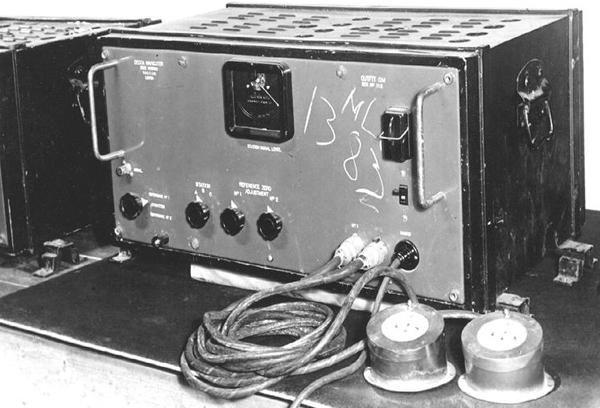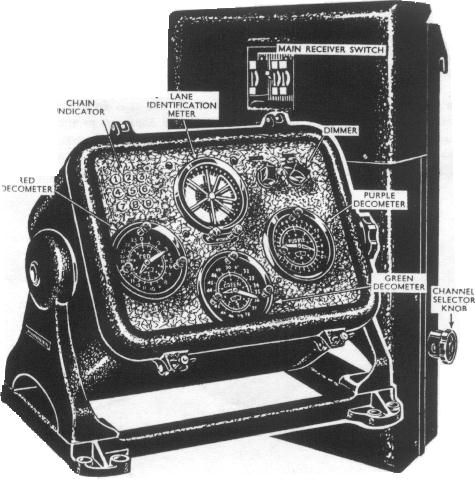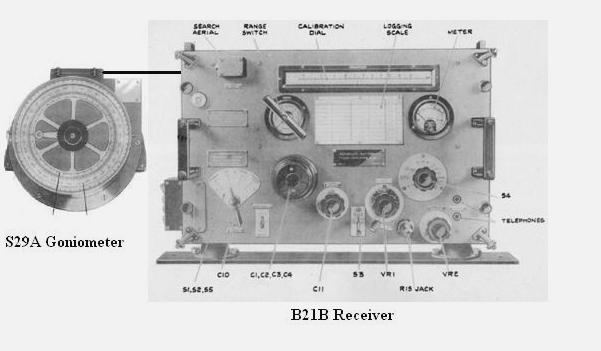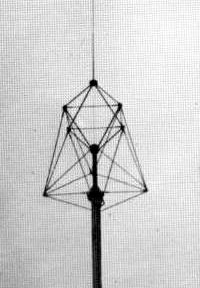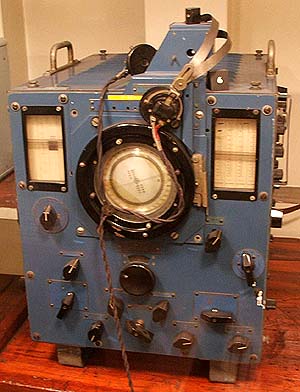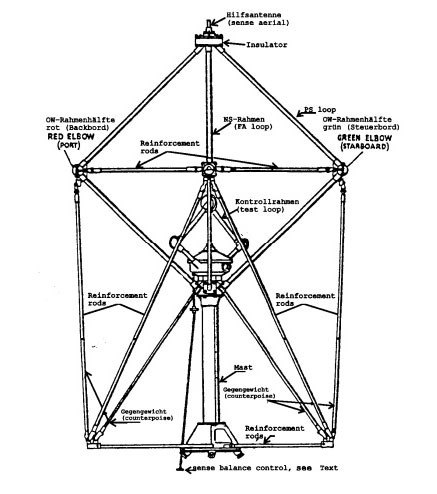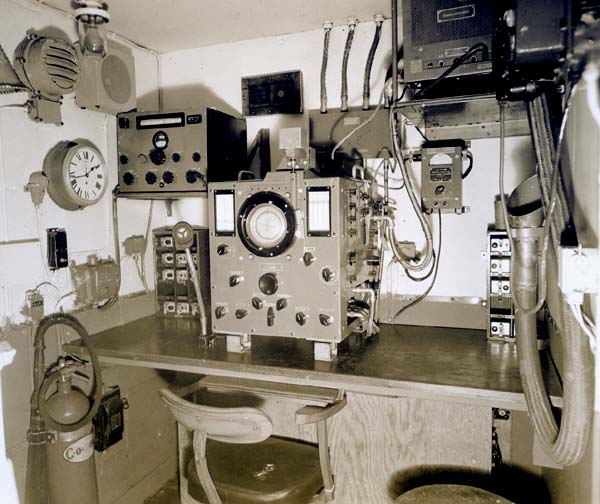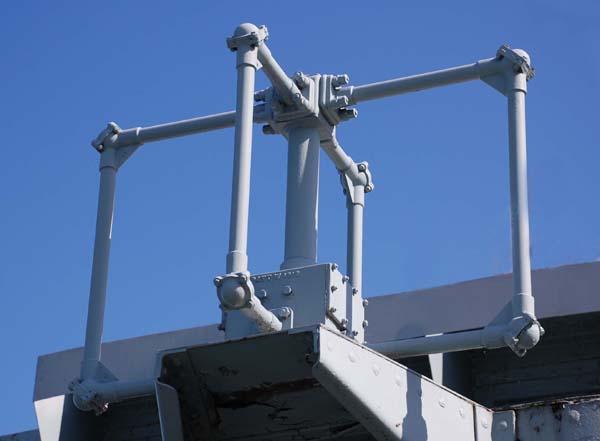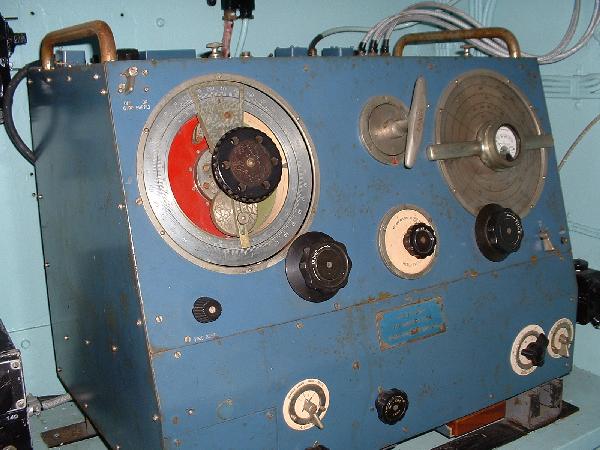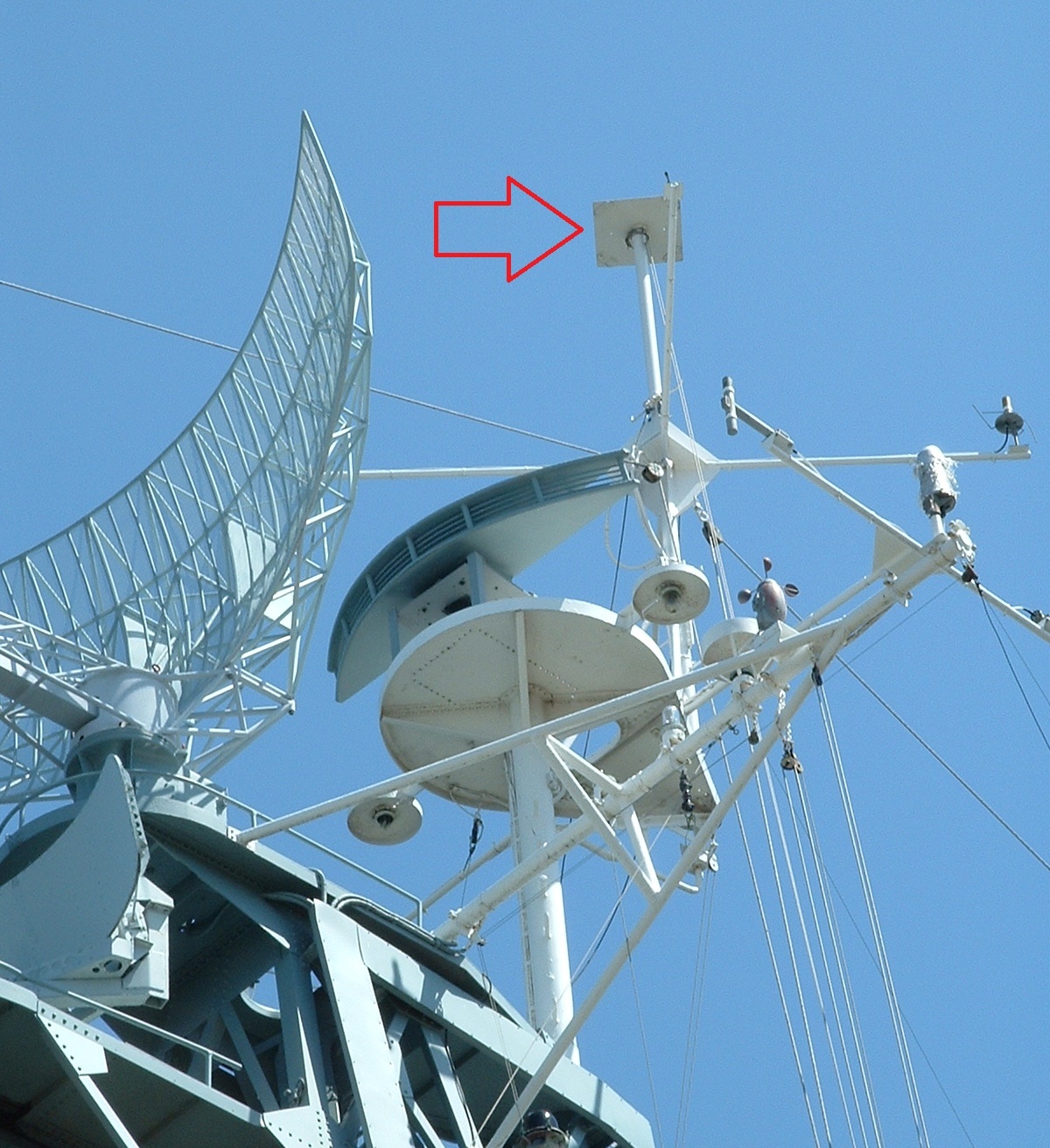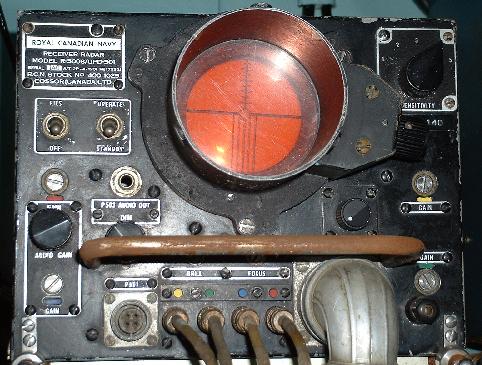| GEE RADIONAVIGATION SYSTEM (1943 - 194?) |
| GEE was a hyperbolic radionavigation system used by both ships
and aircraft. It measured the time delay between two radio signals to produce
a fix, with an accuracy in the order of a few hundred metres at ranges
up to about 500 km (350 miles). It was the first hyperbolic navigation
system to be used operationally, entering service with RAF Bomber Command
in 1942.
QH was first used by the Royal Navy in the Dieppe raid in August 1942 and was subsequently established as a standard system for surface navigation. For Operation Neptune (D-Day), the initial legs of swept channels were planned to coincide with the same lines as the Gee lattice maps. So important was accuracy that some 860 invasion ships were outfitted with Gee Outfit QH. Being a British system situated in the UK, GEE was likely deinstsalled on HAIDA before HAIDA returned to Canadian waters. |
 |
| GEE station components. The Gee Mk. II system consisted of three parts - the R1355 radio receiver, the type 62 Indicator Unit and the power supply. The naval version of GEE was known as outfit QH. HAIDA was fited with the QH3 variant. (Photo courtesy of "Signals Collection '40-'45" web page). |
DeCCA NAVIGATOR 'QM' RECEIVER (1944 to 1944) The Decca Navigator system was developed as a secret wartime radionavigation aid for the British Admiralty. Pictured is receiver outfit QM . The QM was a prototype for follow-on Decca receivers. Decca was reliable navigation system to around 250 to 300 nm so its main use was for coastal navigation. (From the collection of Walter Blanchard) In order to keep the system a secret from the German military, the Decca transmitters were set up in the UK and turned up on June 5/44 for D-Day and shut down on June 7/44. Decca could not even be used in UK waters for the duration of WWII and then some. Decca was probably de-installed before HAIDA sailed for Canada because the receiver would not be of any use in Canadian waters.
DECCA NAVIGATOR Mark 12 RECEIVER (1958 to 1963?) In 1946, the first Decca chain became commercially operational in the UK. From there on, there was a steady growth of new chains into 25 countries. The RCN decided to evaluate Deuce as a means of accurate coastal navigation. The contract to build Canada's four Decca chains was signed in 1957 and by 1958, it was confirmed that one of the chains was in full operation and in use by the RCN. All four chains were fully accepted by the navy in 1961. At night, accuracy was guaranteed out to 240 - 300 nm to a resolution of +/- 50 meters during daytime to 200 meters at night. The master stations for the four the four Canadian Decca chains ewer located at Madeline Islands, Quebec; Chester, Nova Scotia, Port Menier, Anticosti Island and Port Blandford, Newfoundland. Most of the chains remained operational until the early 1980s. Decca equipment could not be purchased - only rented. When HAIDA paid off, Decca was still operational so the MK 5 receiver was returned back to Decca.
Pictured is a Mark 5 Decca receiver, the exact type fitted in HAIDA. The indicator box, called a Decometer bowl, indicated the position of "electronic" lanes which were then applied to the appropriate navigational chart for the region in which the ship was in. (Its a bit more complicated thsan that). A substitute Mk 12 decometer bowl can be seen in HAIDA's Operations Room. The exact placement of the decometer is not known at this time. (Decca Navigator Company photo)
| Model DAS Loran 'A' Receiver (194(?) - 1963) |
| Loran A was a long range radionavigation system first developed during WWII and closed down internationally by 1985. It was superseded by the Loran 'C' system. Loran A was a navigation system in which position is determined from the intervals between signal pulses received from two widely spaced radio transmitters which were slaved to a master transmitter. Pulses were displayed on a cathode ray tube. The difference in time intervals would then be applied to a chart which would indicate latitude and longitude. A typical range over water would be around 1,500 nm. |
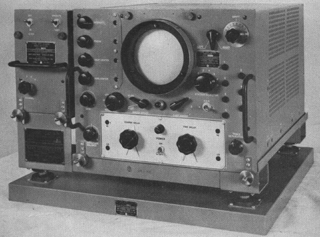 |
| A closer view of the DAS receiver. Loran A worked in the radio band 1750 to 1950 KHz. (Photo via HNSA web site) |
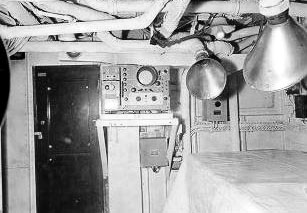 |
| Taken in February 1946, this photo shows the DAS Loran 'A' receiver mounted on a shelf in the Operations Room. A later drawing shows the DAS receiver fitted to a shelf in the Chart Room. It is assumed that the DAS receiver was on the ship for most of HAIDA's service life since this was the only means of long distance radionavigation. (Photo by John Roue) . |
| A 1952 drawing shows the DAS Loran 'A' receiver as being located on the starboard aft corner of the Operations Room so this must have been an "intermediate" position before it was relocated to the newly created Chartroom. |
